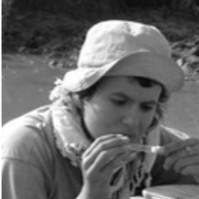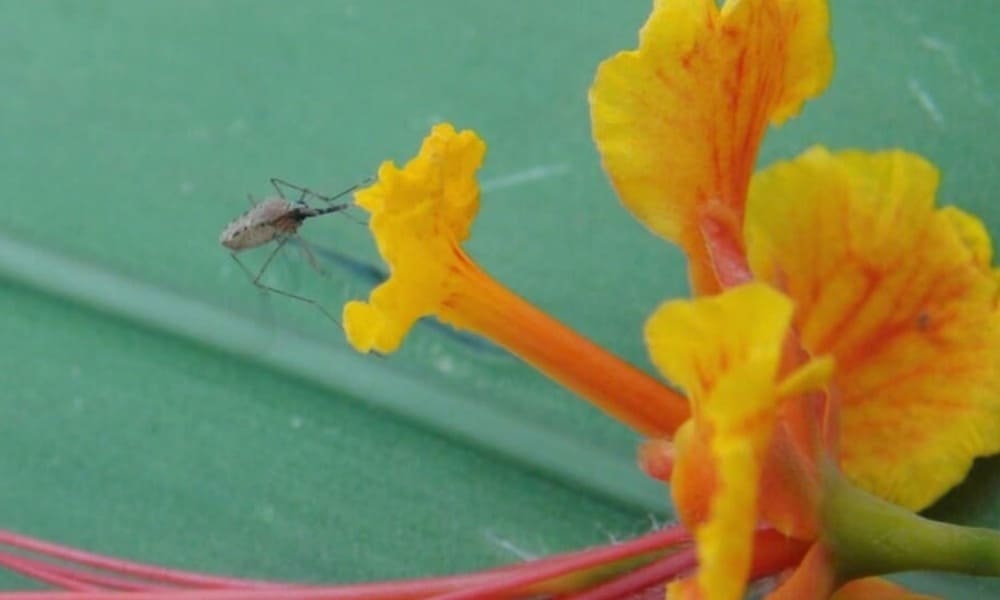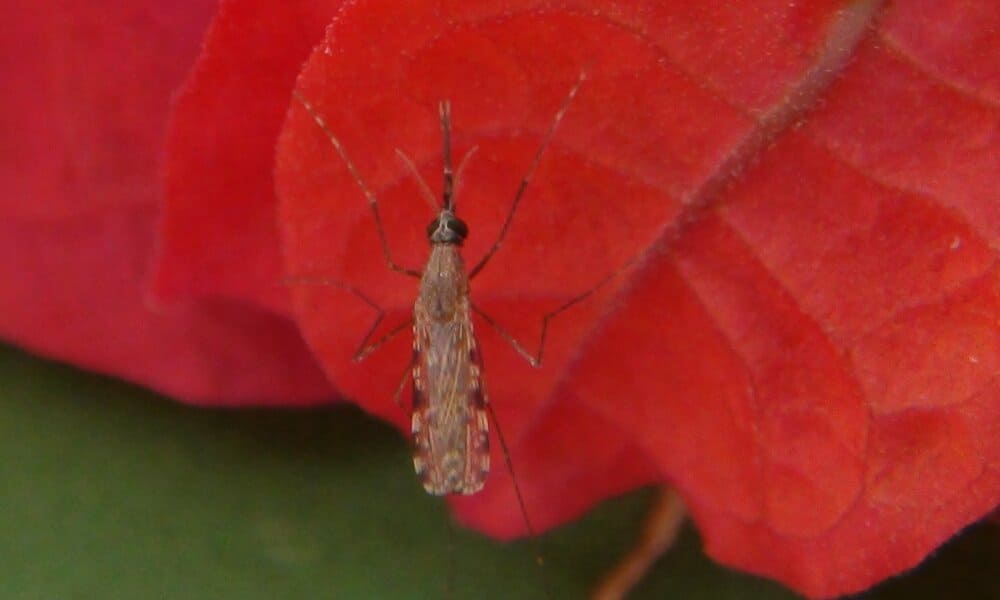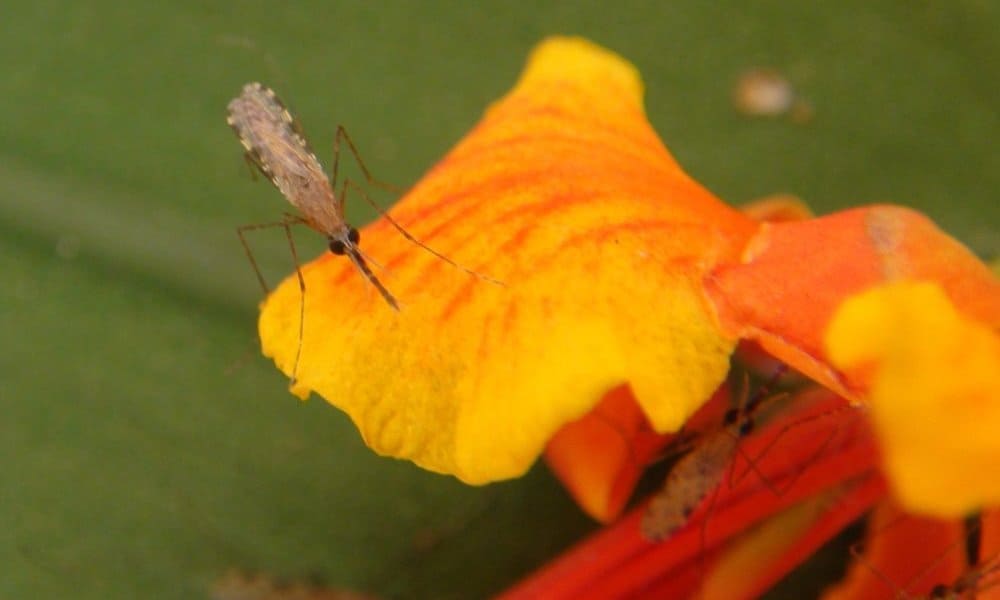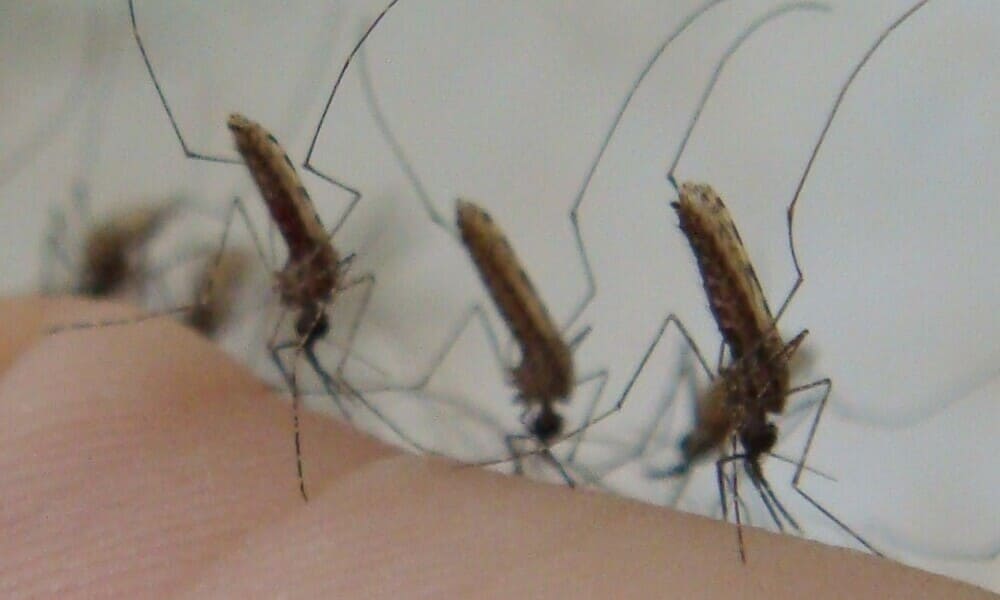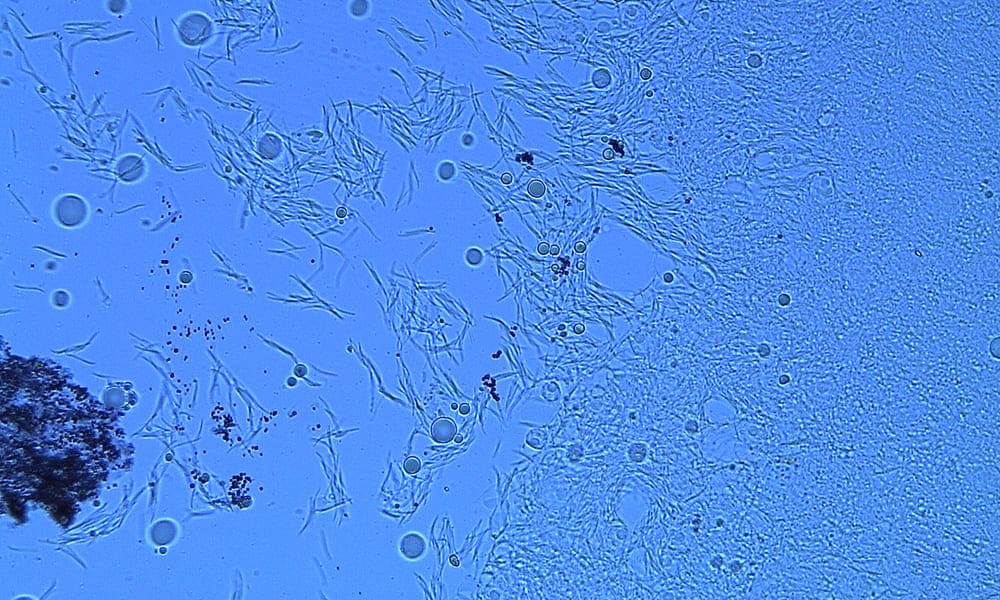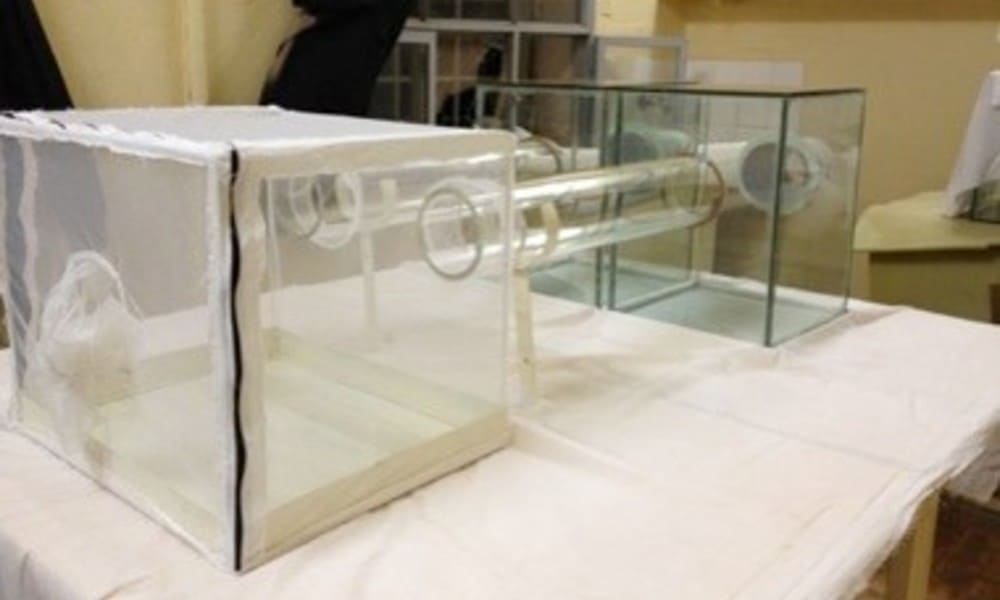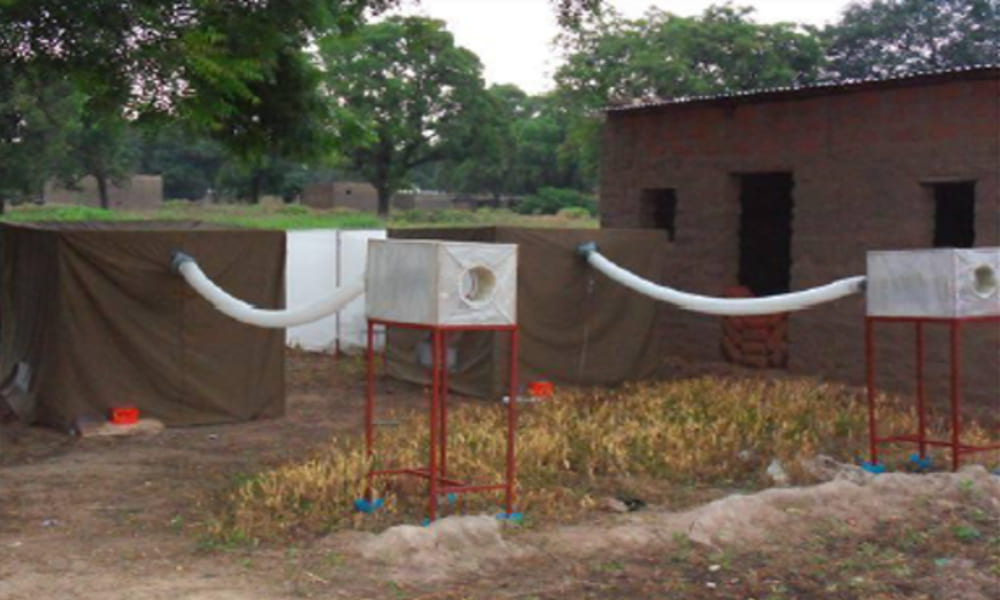PALUNEC is a young team associated to the Institut de Recherche pour le Dévelopement (Program "JEAI"). The objectives are to: (i) Quantify the importance of plant diversity on the transmission of Plasmodium falciparum, a parasite responsible for the severe form of human malaria. (ii) Determine whether mosquitoes can choose among several species of plants, those that give them the best longevity and fertility or that allow them to fight the parasite that they transmit (self-medication hypothesis). (iii) Develop transmission-blocking sugar baits. The research consists in setting up small mobile stations made up of sugar solutions based on natural plant extracts with therapeutic properties aimed at freeing mosquitoes from their parasites, thus preventing transmission to humans. (iv) Quantifying the contribution of malaria vectors to plant pollination and the maintenance of biodiversity.
Poster and Flyer about the team and project
Project funding: IRD -JEAI
[Photo credit: Thierry Lefèvre]
CURRENT TEAM MEMBERS
.jpg)
Genetic and environmental determinants of the extrinsic incubation period of Plasmodium falciparum.
-200x200.jpg)
Role of natural sources of nectar on malaria transmission and contribution of vectors to ecosystem services.
PAST TEAM MEMBERS

Evolutionary ecology of mosquito - Plasmodium interactions: influence of natural sources of nectar and parasitic manipulation.

Environmental variation in mosquito host-Plasmodium interactions.
CURRENT PROJECTS
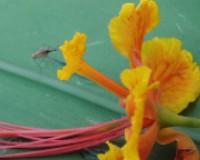
Collaborators: Roch Dabiré, Serge Yerbanga (IRSS, Bobo Dioulasso), Olivier Gnankiné (Université Joseph Ki Zerbo, Ouagadougou), Prisca Paré (IRSS, Bobo Dioulasso and Univ. JKZ, Ouagadougou)
learn more ...
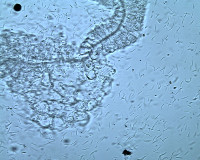
Collaborators: Edwige Guissou, Serge Yerbanga, Roch Dabiré, Da Dari (IRSS-DRO, Bobo Dioulasso, Burkina Faso), Anna Cohuet, Marc Choisy, Ramsès Djidjou-Demasse and Quentin Richard (MIVEGEC, Montpellier).
learn more ...
The causes of variability of a key transmission traits of malaria, namely the parasite development duration within the vector remain largely unknown. This project assess the relative importance of environmental and genetic determinants in shaping parasite transmission traits within their mosquito vectors using Plasmodium falciparum, responsible for the most severe form of human malaria, and its major mosquito vectors Anopheles coluzzii and An. gambiae. Mosquitoes are experimentally infected in controlled conditions with natural field isolates of the parasite. This project determine whether parasite's development duration depends on: (i) Parasite genetic (do some parasite isolates grow faster than others?) (ii) Mosquito genetic (do some mosquito genetic species/lines slow down or speed up parasite development?) (iii) Genetic interactions between the mosquito and the parasite (do some parasite isolates grow faster only in some specific mosquito species/lines?) (iv) Mosquito age (do parasite speed up their development when in an old vector?) (v) Mosquito exposure to sub-lethal doses of insecticides (do parasite speed up their development when in a mosquito with reduced life expectancy?) (vi) Presence of other parasites (do parasites speed up their development when the vector is already infected with P. falciparum?).
Associations to vector longevity and other mosquito/parasite fitness-related traits (e.g. mosquito fecundity, parasite load) are also identified (are fast developing parasites also those that are the most virulent i.e. those that induce greatest longevity reduction? Are fast developing parasites also those that produce the least transmissible stages? etc). These correlations often reveal trade-offs and constraints and have important implications for understanding the evolution of parasite transmission strategies. Finally, computational models are built to evaluate (i) how genetic and environmental influences on parasite’s transmission strategies can shape disease dynamic and (ii) how disease control programs can influence the evolution of parasite’s transmission strategies.
Project funding: ANR STORM (16-CE35-0007) 2016-2021
[Photo credit: Edwige Guissou]
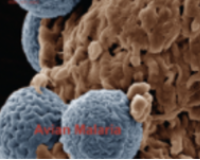
Collaborators: Thierry Lefevre (CREES, MIVEGEC, Bobo-Dioulasso), Serge Yerbanga (IRSS Bobo Dioulasso), Anna Cohuet and Isabelle Morlais (MIVEGEC Montpellier), Sandrine Nsango (Institute Pasteur Yaounde), Antoine Berry (CPTP Toulouse), Sylvain Gandon (CEFE Montpellier)
learn more ...
The fate of drug resistant mutations depends on factors which we may be able to control, such as the rate and pattern of drug use. However, it also depends on factors over which we have no control, the most important of which is the biologic al cost that resistance imposes on the fitness of parasites. Drug resistance mutations are known to disrupt the parasite's metabolism, generating fitness costs. In drug-treated hosts these costs are largely compensated by the benefits conferred by the resistance. In untreated hosts, however, the magnitude of these costs will determine whether these mutations will persist and spread in the population. The aim of this project is to investigate the biological costs of drug resistance in Plasmodium within the host, both in the field (Cameroun and Burkina Faso), and in the lab.
Project funding: ANR EVODRUG (16-CE36-0001-01) 2016-2021
[Photo credit: Rivero lab]

Collaborators: Roch Dabiré, Simon Sawadogo (IRSS, Bobo Dioulasso) ; François Rouyer (Neuro-PSI Institut de Neurosciences Paris-Saclay-CNRS) ; Benjamin Sultan (IRD – LOCEAN) ; Claudio Lazzari (IRBI-CNRS), Thierry Lefèvre, Carlo Costantini, Florence Fournet, Nicolas Moiroux (MIVEGEC, Montpellier).
learn more ...
Populations of the most important human malaria vectors in Africa offer instances of ongoing adaptations to new ecological niches set by human actions in the context of global change, with the dramatic consequence of emerging and re-emerging sustained malaria transmission in new spaces and times. Hence, patent adaptations to permanent irrigated schemes, urban settlements and wide insecticides use lead to the conspicuous extension of the repartition area of Anopheles species, and set the scene for the emergence or re-emergence of sustained malaria transmission. Physiological mechanisms allowing malaria mosquitoes to colonize new human-made ecological niches are under scrutiny, however, less attention is given to behavioral modifications triggered by -or in response to-relevant environmental cues characterizing the new ecological niches. In particular, in what ways environmental pressure impact the periodic behavior of the mosquitoes has been overlooked. Insects’ adaptation and success in the colonization of the most diverse environments is associated with the temporal organization of their daily lives. Mosquito physiology and behavior are under rhythmic control, organized in a time-of-day specific manner and the resulting periodicities at the individual level organize insects’ community temporally, just as niche diversification can do so spatially. As mosquitoes exploit the natural oscillations of light, darkness, temperature, and resource availability to entrain their biological rhythms, differences in oscillatory characteristics associated with different environments have the potential to affect the physiological basis and overt expression of many of their periodic behaviors. Accordingly, adaptation to modified stimuli may not only be a requirement for surviving in new habitats, but it may also provide, through its effects on periodic behaviors associated with reproductive success, a mechanism of restriction to gene flow—a fundamental condition for local adaptation and, ultimately, speciation and the diversification of vectorial system. Resolutely rooted in the « real world » concept and working with infectious mosquitoes, we will merge the fields of climatology, behavioral ecology, evolutionary physiology, functional molecular biology, epidemiology, mathematical modelling and social sciences to expose new targets for control and generate niche-specific integrative models, with the aim to better predict risks of disease in the face of environmental changes. Specifically, our project aims at (i) identifying if epidemiologically relevant periodic behaviors show altered rhythmicity in front line populations (ii) determining adaptive value of these changes through the measure of the associated fitness costs or benefits (iii) measuring the extent to which behaviors are further altered by Plasmodium infections (iv) determine the outputs of infection in mosquitoes displaying altered periodicity. This multidisciplinary and integrative approach will generate new cues to understand the functional diversity of An. gambiae s.l., the cornerstone of its adaptive and invasive dynamics. At the applied level, we will generate niche-specific outputs to optimize current predictive models which will include social science data on human behavior, with the aim to better predict risks of disease in the context of global changes. Our study will highlight the fundamental roles that circadian rhythms play in malaria vectors adaptation, and, through the molecular approach, will suggest new targets for alternative innovative strategies. Our findings and resulting protocols will be easily applied to the study of virtually all disease vectors in all ecological settings.
Project funding: ANR ANORYTHM 2016-2021
[Photo credit: Bienvenu Ouattara]
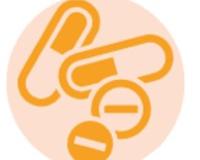
Countries Involved: Burkina Faso, France, India, Kenya, the Netherlands, Sierra Leone, Sweden, Tanzania.
learn more ...
With exciting progress being made in vaccine development at all stages of the life cycle – pre-liver, liver, red blood cell and bloodstream stages – MMVC has ambitious plans to combine them in a single formulation, maximising the benefits of the individual vaccines. The four-stage vaccine will include a next-generation version of RTS,S, known as R21; a liver-stage vaccine that has shown positive results in EDCTP-funded trials; a promising vaccine targeting a key protein involved in red blood cell invasion, PfRH5; and a vaccine targeting a key protein in the final bloodstream form, Pfs25. Results from a series of controlled human infection studies – using new capacity in Africa – and pilot trials will inform the design of an appropriate vaccination strategy. This will be tested in a phase II trial in infants in sites of different levels of malaria transmission. The project will also build capacity to test the vaccine in adults as a possible way of blocking transmission to mosquitoes in malaria elimination campaigns.
Project funding: EDCTP MMVC 2018-2024
[Photo credit: EDCTP]
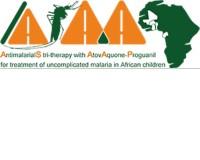
Collaborators: Institut de Recherche Clinique du Bénin (IRCB) in Abomey-Calavi in Benin; Institut des Sciences et Techniques (INSTech) in Bobo-Dioulasso in Burkina Faso; Centre de Recherches Médicales de Lambaréné (CERMEL) in Lambaréné in Gabon; Université des Sciences, des Techniques et des Technologies de Bamako (USTTB) in Bamako in Mali ; Institut de Recherche pour le Développement (IRD) in France ; Bernhard-Nocht-Institut für Tropenmedizin (BNITM) in Hamburg in Germany ; Kwame Nkrumah University of Science & Technology (KNUST) in Kumasi in Ghana
learn more ...
This project is a clinical evaluation of Clinical evaluation of artemether-lumefantrine + atovaquone-proguanil for treatment of uncomplicated malaria in African children. Artemisinin-based combination therapies (ACTs) are currently the first-line treatment for uncomplicated Plasmodium falciparum malaria. ACTs are bi-therapies combining a fast-acting, short half-life artemisinin derivative with a longer half-life partner drug. The efficacy of ACTs has declined over the last ten years in some areas of Southeast Asia (SEA) because of parasite resistance, leading to unacceptably high rates of treatment failure. For how long current ACTs will remain highly efficacious in Africa is unknown, but their efficacy is inevitably expected to decline because of drug pressure. The question is not “Will ACTs resistance arise in Africa?“, but rather “When will ACTs resistance arise in Africa?” Given the time needed to conduct clinical trials and to introduce new antimalarials from the discovery pipeline, early assessment of the efficacy and safety of innovative approaches to using effective antimalarials is of utmost importance to mitigating the risk of resistance and for quick and timely deployment.
Project funding: EDCTP - ASAAP
[Photo credit: Oumou Maiga]
RELEVANT PUBLICATIONS Click here for the full list
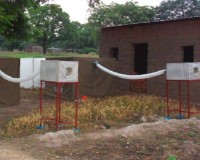
Whether the malaria parasite Plasmodium falciparum can manipulate mosquito host choice in ways that enhance parasite transmission toward humans is unknown. We assessed the influence of P. falciparum on the blood-feeding behaviour of three of its major vectors (Anopheles coluzzii, An. gambiae and An. arabiensis) in Burkina Faso. Host preference assays using odour-baited traps revealed no effect of infection on mosquito long-range anthropophily. However, the identification of the blood meal origin of mosquitoes showed that females carrying sporozoites, the mature transmissible stage of the parasite, displayed a 24% increase in anthropophagy compared to both females harbouring oocysts, the parasite immature stage, and uninfected individuals. Using a mathematical model, we further showed that this increased anthropophagy in infectious females resulted in a > 250% increase in parasite transmission potential, everything else being equal. This important epidemiological consequence highlights the importance of vector control tools targeting infectious females.
Read more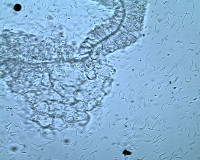
Evaluating the risk of emergence and transmission of vector‐borne diseases requires knowledge of the genetic and environmental contributions to pathogen transmission traits. Compared to the significant effort devoted to understanding the biology of malaria transmission from vertebrate hosts to mosquito vectors, the strategies that malaria parasites have evolved to maximize transmission from vectors to vertebrate hosts have been largely overlooked. While determinants of infection success within the mosquito host have recently received attention, the causes of variability for other key transmission traits of malaria, namely the duration of parasite development and its virulence within the vector, as well as its ability to alter mosquito behavior, remain largely unknown. This important gap in our knowledge needs to be bridged in order to obtain an integrative view of the ecology and evolution of malaria transmission strategies. Associations between transmission traits also need to be characterized, as they trade‐offs and constraints could have important implications for understanding the evolution of parasite transmission. Finally, theoretical studies are required to evaluate how genetic and environmental influences on parasite transmission traits can shape malaria dynamics and evolution in response to disease control.
Read more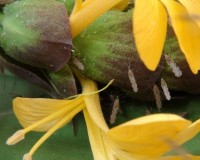
The ecological context in which mosquitoes and malaria parasites interact has received little attention, compared to the genetic and molecular aspects of malaria transmission. Plant nectar and fruits are important for the nutritional ecology of malaria vectors, but how the natural diversity of plant-derived sugar sources affects mosquito competence for malaria parasites is unclear. To test this, we infected Anopheles coluzzi, an important African malaria vector, with sympatric field isolates of Plasmodium falciparum, using direct membrane feeding assays. Through a series of experiments, we then examined the effects of sugar meals from Thevetia neriifolia and Barleria lupilina cuttings that included flowers, and fruit from Lannea microcarpa and Mangifera indica on parasite and mosquito traits that are key for determining the intensity of malaria transmission. We found that the source of plant sugar meal differentially affected infection prevalence and intensity, the development duration of the parasites, as well as the survival and fecundity of the vector. These effects are likely the result of complex interactions between toxic secondary metabolites and the nutritional quality of the plant sugar source, as well as of host resource availability and parasite growth. Using an epidemiological model, we show that plant sugar source can be a significant driver of malaria transmission dynamics, with some plant species exhibiting either transmission-reducing or -enhancing activities.
Read more
Accumulating evidence indicates that species interactions such as competition and predation can indirectly alter interactions with other community members, including parasites. For example, presence of predators can induce behavioural defences in the prey, resulting in a change in susceptibility to parasites. Such predator-induced phenotypic changes may be especially pervasive in prey with discrete larval and adult stages, for which exposure to predators during larval development can have strong carry-over effects on adult phenotypes. To the best of our knowledge, no study to date has examined possible carry-over effects of predator exposure on pathogen transmission. We addressed this question using a natural food web consisting of the human malaria parasite Plasmodium falciparum, the mosquito vector Anopheles coluzzii and a backswimmer, an aquatic predator of mosquito larvae. Although predator exposure did not significantly alter mosquito susceptibility to P. falciparum, it incurred strong fitness costs on other key mosquito life-history traits, including larval development, adult size, fecundity and longevity. Using an epidemiological model, we show that larval predator exposure should overall significantly decrease malaria transmission. These results highlight the importance of taking into account the effect of environmental stressors on disease ecology and epidemiology.
Read more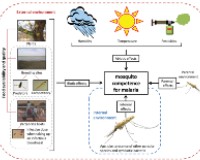
Understanding how mosquito vectors and malaria parasites interact is of fundamental interest, and it also offers novel perspectives for disease control. Both the genetic and environmental contexts are known to affect the ability of mosquitoes to support malaria development and transmission, i.e., vector competence. Although the role of environment has long been recognized, much work has focused on host and parasite genetic effects. However, the last few years have seen a surge of studies revealing a great diversity of ways in which non-genetic factors can interfere with mosquito-Plasmodium interactions. Here, we review the current evidence for such environmentally mediated effects, including ambient temperature, mosquito diet, microbial gut flora, and infection history, and we identify additional factors previously overlooked in mosquito-Plasmodium interactions. We also discuss epidemiological implications, and the evolutionary consequences for vector immunity and parasite transmission strategies. Finally, we propose directions for further research and argue that an improved knowledge of non-genetic influences on mosquito-Plasmodium interactions could aid in implementing conventional malaria control measures and contribute to the design of novel strategies
Read morePHOTO GALLERY
Montpellier
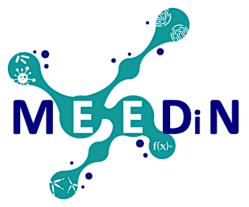
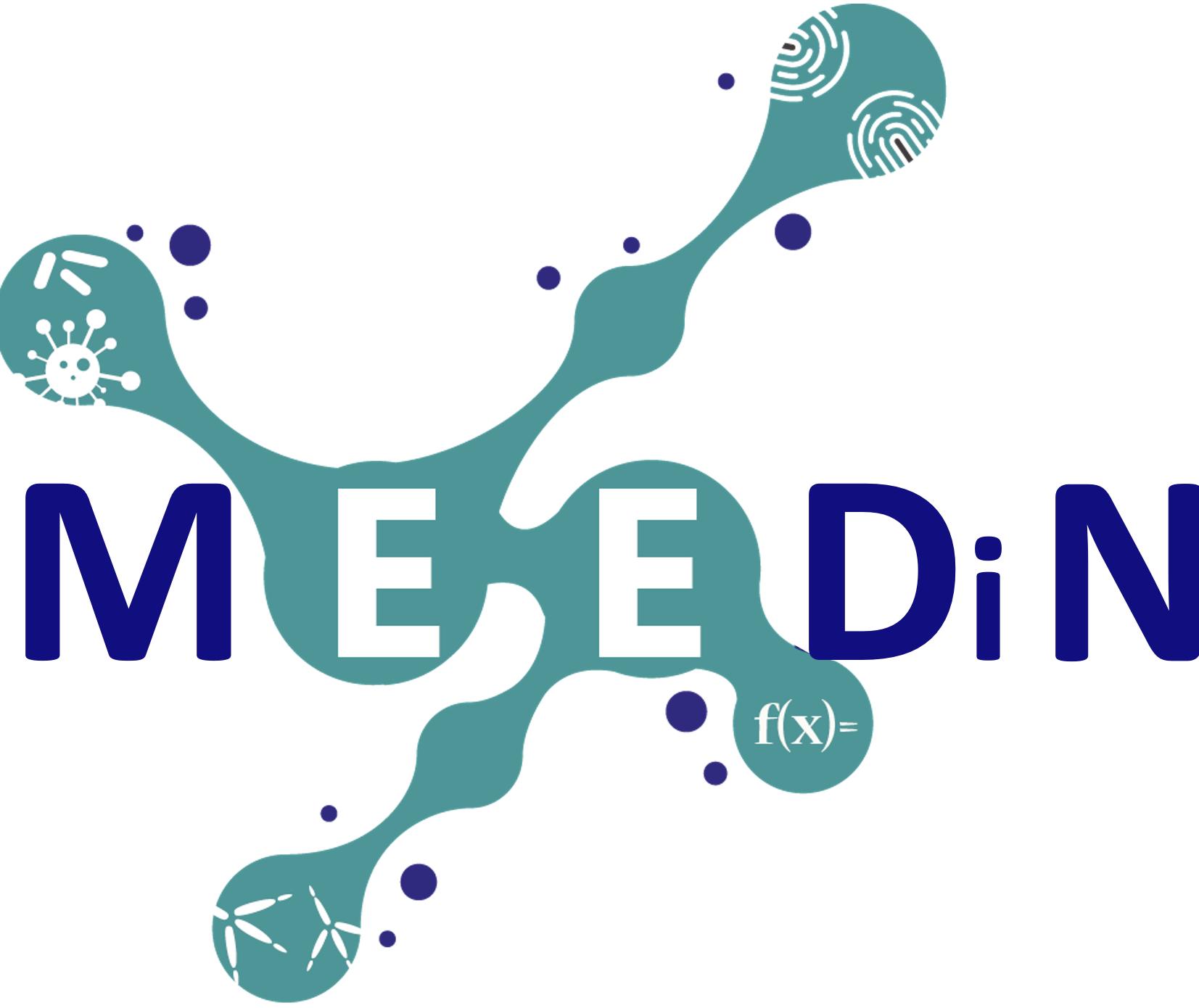



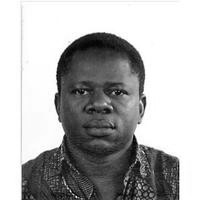
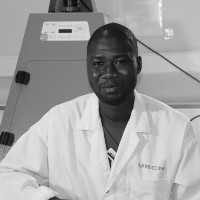



-200x200.jpg)


